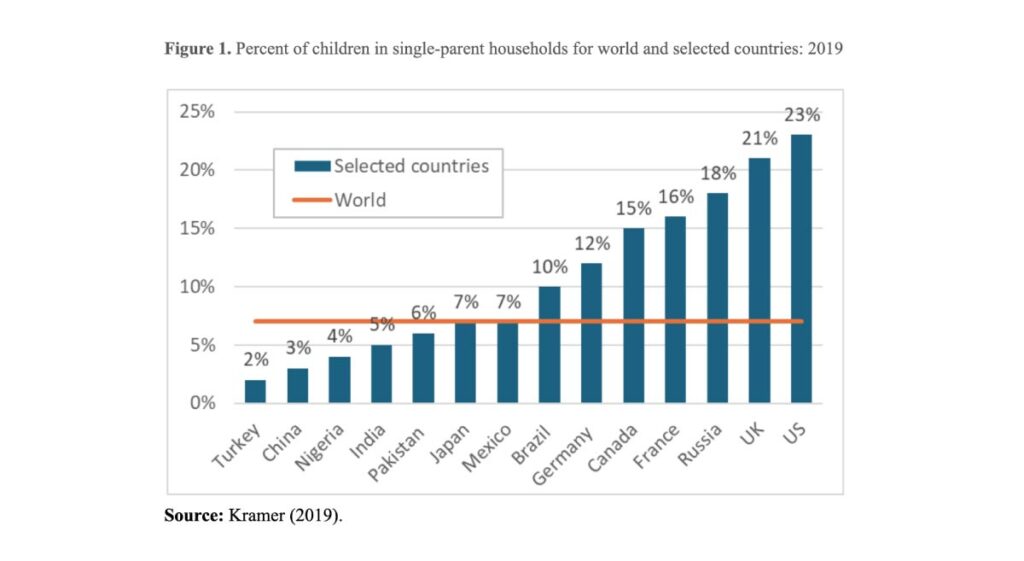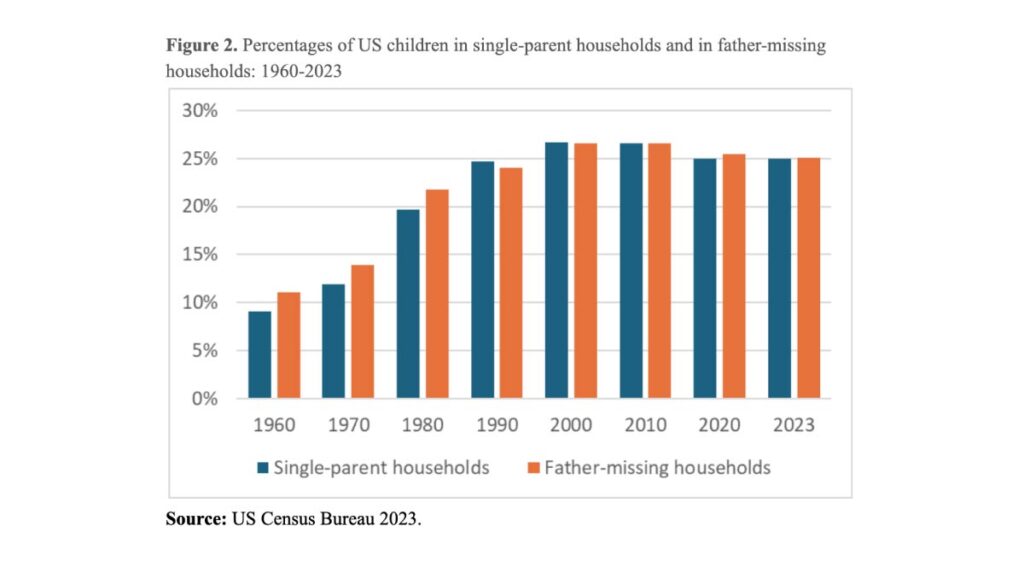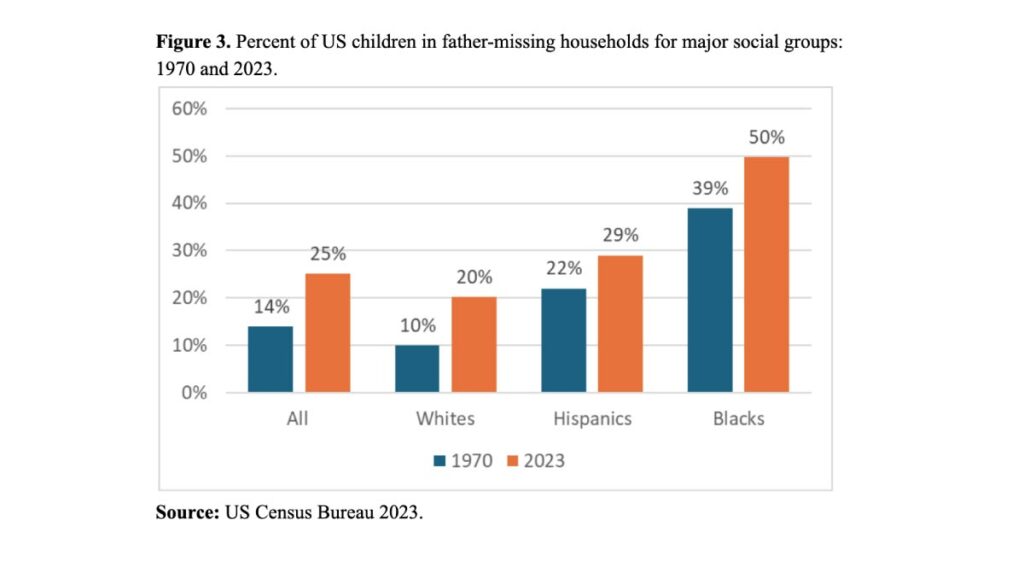America leads the world in single-parent household rates, with the large majority of those households missing a father. Despite the public’s recognition of the importance of two-parent households for children and society, Joseph Chamie opines that their prevalence in the US is not going to rise any time soon.
In 2023, nearly one in four children in America aged 0‒17 years, totaling about 19 million, were living in a household without their biological, step, or adoptive father, mostly with their mother (85% of cases). In fact, living in a single-parent households with a father absent is the second most common U.S. living arrangement, and the proportion of these households has doubled since 1970 (US Census Bureau, 2023).
Single-parent households in the US are the result of various factors, including declining marriage rates, divorces, widowhood, non-married parents who split up and parents who are single by choice.
Levels
According to a global survey of 130 countries conducted in 2019 (Kramer 2019), the US had the highest rate of children living in single-parent households of any nation in the world, at about 23%, or more than three times the worldwide level of 7% (Figure 1).

The prevalence of these cases was markedly lower in neighboring Canada and Mexico (15% and 7%, respectively), and much lower in developing countries, all below 5%.
Trends
For decades, the share of U.S. children living with a single parent has been rising, accompanied by a decline in marriage rates and a rise in births outside marriage (Livingston 2018). The percentage of US children living in single-parent households nearly tripled between 1960 and 2023, increasing from 9% to 25% (US Census Bureau 2023). In the same period, the share of households with fathers missing more than doubled, increasing from 11% to 25% (Figure 2).

The proportions of children living in a father-absent household varies considerably among America’s three major social groups: in 2023, the shares were 20%, 29% and 50% among Whites Hispanics and Blacks, respectively, and in all three groups they are substantially higher than 50 years before (Figure 3).

The rise in births to unmarried mothers has contributed strongly to the increase in households with missing fathers. While many unmarried women cohabit with a partner at the time of giving birth, these relationships fail at twice the rate of marriages (Brewer 2023). In 2022, 40% of all births in the US were to unmarried women, a four-fold increase since 1970. Again, there is notable variability across the major US social groups: 16% for Asians, 22% for Whites, 42% for Hispanics and 69% for Blacks (Osterman 2024).
Consequences and perspectives
Children who grow up in a household with only one biological parent are worse off, on average, than children who grow up with both of their biological parents, regardless of the parents’ race or educational background (McLanahan and Sandefur 1996). For instance, they are nearly four times more likely to live in poverty (Brewer 2023), have more trouble academically, scoring poorly on tests of reading and mathematics, and are more likely to drop out of school.
Boys living in these conditions are more likely to engage in negative social behaviors (Kearney 2023) and girls often experience lack of confidence and struggle with decision-making (Rothwell 2023).
Nearly half of US adults in a 2021 national survey – men especially (59% of men versus 37% of women; Hurst 2022) – said that raising children in a single-mother household is generally a bad thing for society. However, despite these widespread negative opinions, current trends in marriage, cohabitation and divorce, and social norms concerning non-marital births and family type, suggest that the situation is unlikely to change any time soon. The same holds for the resulting inequalities that will affect the future lives of these children.
References
Brewer, Jack (2023) “Fatherlessness and its effects on American society”. May 15, America First Policy Institute, Washington, D.C.
Hurst, Kiley (2022) “Rising share of Americans see women raising children on their own, cohabitation as bad for society”. March 11, Pew Research Center, Washington D.C.
Kearney, Melissa (2023) The Two-Parent Privilege. University of Chicago Press, Chicago, Illinois.
Kramer, Stephanie (2019) “U.S. has world’s highest rate of children living in single-parent households”. December 12, Pew Research Center, Washington D.C.
Livingston, Gretchen (2018) “About one-third of U.S. children are living with an unmarried parent”. April 27, Pew Research Center, Washington D.C.
McLanahan, Sara and Gary Sandefur (1997) Growing Up with A Single Parent: What Hurts and What Helps. Harvard University Press, Cambridge, Massachusetts.
Osterman, Michelle J. et al. (2024) “Births: Final Data for 2022”. April 4, National Vital Statistics Reports, CDC, Washington, D.C.
Rothwell, Jonathan (2023) “Parenting Is the Key to Adolescent Mental Health”. November 30, Gallup and The Institute for Family Studies, Charlottesville, Virginia.
US Census Bureau (2023) “Living Arrangements of Children Under 18 Years Old: 1960 to Present”. November, Washington, D.C.


